Yamadera (山寺)is a religious complex located on the top of the mountains, at the north-east of Yamagata city. It’s one of these places shrouded in mystery. One of these that let you say “This is Japan”.
Several temples are located on a steep slope and at the top you can enjoy a stunning view of the valley. Be ready to climb up on more then 1000 steps!
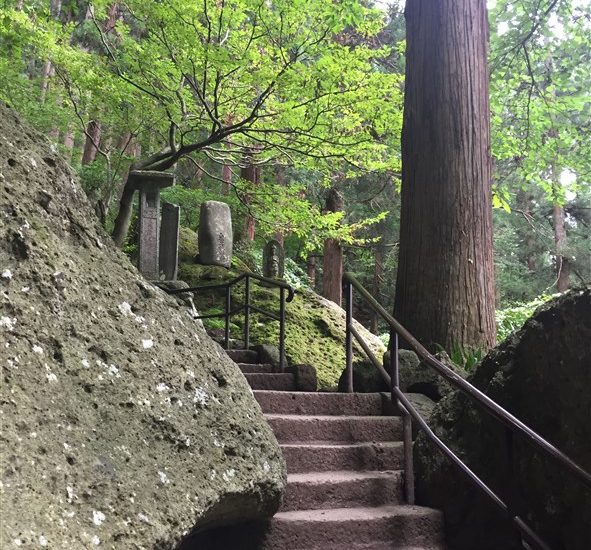
The complex was founded more then thousand years ago, in 860, as temples of Tendai sect, and its official name is actually Risshaku-ji. Nevertheless it’s usually known as Yamadera, which in Japanese literally means “Mountain Temple(s)“.
How to get to Yamadera
Yamadera, in Yamagata prefecture, is located halfway between Yamagata city and Sendai, Miyagi prefecture’s main city.
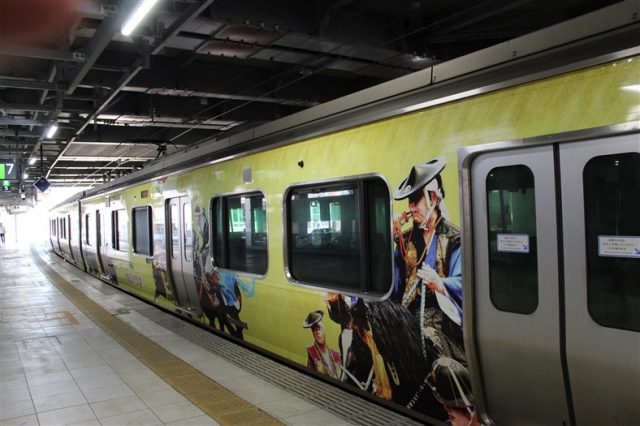
Yamadera is conveniently connected to both the cities by JR Senzan Train Line (仙山線). From Sendai Station (platforms n.7-8), you can reach Yamadera in about 1 hour and the price is 840yen/one way. If you have a JR Pass, the train route is included in the plan.
History of Yamadera: decline and prosperity
During the early Heian Period (794-1185), the Emperor Seiwa sent one of the most important Buddhist priests to the Tohoku Region. Monk Ennin (then known also as Jikaku Daishi) founded Yamadera, in the current Yamagata prefecture, but, at that time, part of the Dewa province, the northest border of Japan.
After his trip in China, monk Ennin became the highest minister of Tendai sect and decided to found Risshaku-ji (Yamadera) as branch temples of the Enryaku-ji Temple in Kyoto, the Tendai sect’s headquarter.
Currently, just a wood sculpture representing Yakushi Nyorai (Buddha Bhaisajyaguru), the Buddha of medicine, dates back to this period.
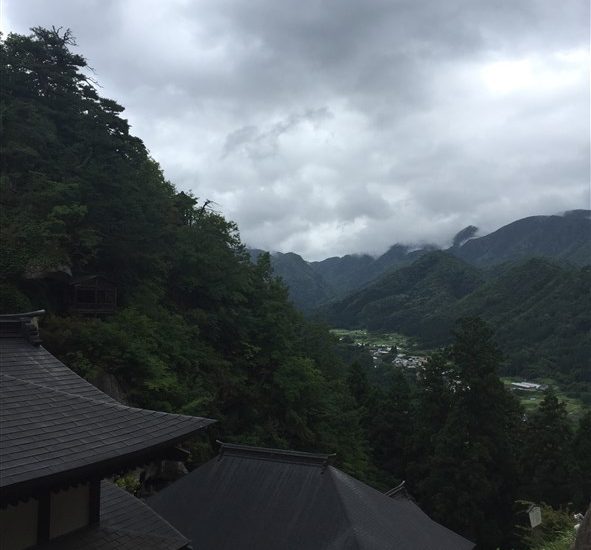
Then, during the Kamakura Period (1185-1382), Yamadera became the centre of the Tohoku’s Buddhist culture and had its maxium growth: over 300 monks and over 1000 devouts lived in the upper and lower part of the mountain.
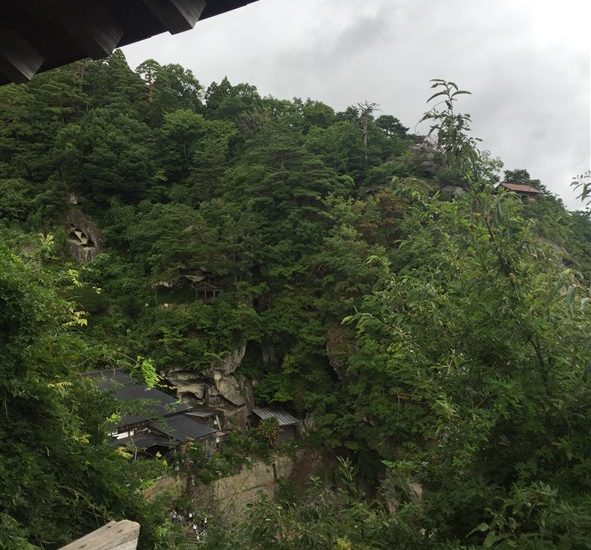
Even though in the Japanese Feudal Period (1450-1600) the temples were distroyed by the wars and temporary fell into decline, during the next Edo Period (1615-1868), Yamadera recieved a lot of recognitions by the shogun (military government) and gained its prosperity again. Risshaku-ji,during Edo Period, finally became a powerful institution.
Yamadera and the poet Matsuo Bashō
Yamadera is also known for the poet Matsuo Bashō (松尾芭蕉), who wrote one of his best haiku while there. During his trip in the north of Japan, in the late 1600, Bashō stopped by also in Yamadera and composed his poem celebrating the tranquility and silence of the area. Today, the statue and inscription in a stone can be seen in the lower part of Yamadera religious complex.
閑さや岩にしみ入蝉の声The stillness –
Shrilling into the rocks
The semi’s cry(Matsuo Bashō)
What to see in Yamadera
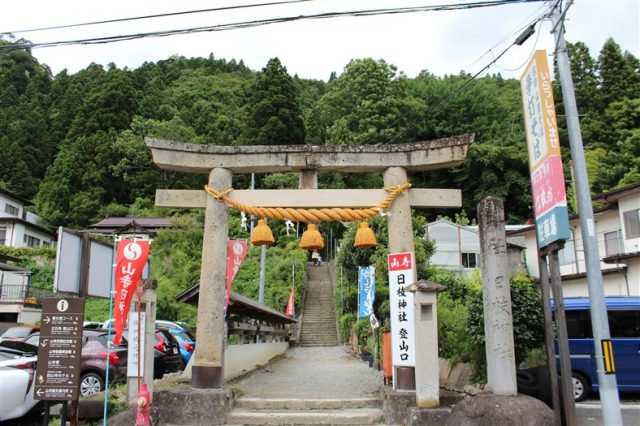
The entrance is located about 5/10 minutes walk from Yamadera train station, where you can find several souvenirs and food shops.
Crossed the bridge, on your right you’ve the Tourist Information Centre. Going ahead about 200 meters, on the left side of the street, the first stairs leading to the entrance Gate starts.
The visit to the temples takes approximately 2-3 hours.
Konponchudo Hall: entrance to the temples
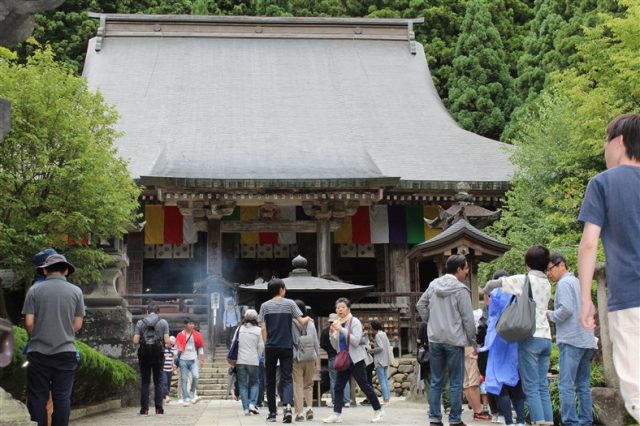
Konponchudo Hall is the first temple hall you find when entering in Yamadera religious complex. This building, made in beechwood, is the oldest of the complex. Inside you can see some Buddhist statues, candles, brought here from Kyoto’s Enryaku-ji, and a flame, that I wasn’t able to find and see, though. Anyway, it’s said that this flame has been burning since Yamadera estabilishment.
In front of Kunponchudo Hall, there is Nadebotoke, a statue representing Buddha. It’s said that it has the power to heal physical pain. You should touch the statue on the area you have pain.
Then, here there is also a small building, Treasure House, which can be visited paying a ticket (200yen – 8.30-17.00). However, when I visited Yamadera, Treasure House was unfortunately closed to the public.
Sanmon Gate
On the left of Konponchudo, there’s Sanmon Gate, the starting point to the top of the religious complex. The entrance is 300yen (8.00-17.00).
Mida Hora rock and Nionmon Gate
Crossed Sanmon Gate, 1100-steps path climbs up to the top of the mountain. The path is inside a deep forest, and here and there aorund the path there are small statues and lanterns made with stone. The atmosphere is charming, especially under that drizzle I found! It takes about 30 minutes to reach the top.
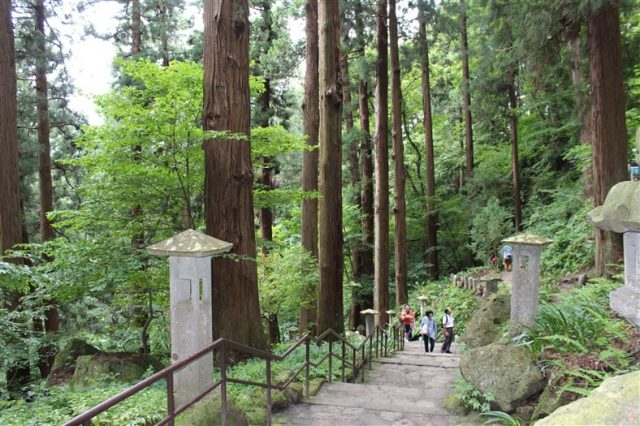
Along the path, on your right, you’ll find a big rock, called Mida Hora. This rock would resembles the Buddha Amida. Also, several small holes have been dug naturally in the rock and the believers stuck 1 yen coins into them, as gratitude to Buddha.
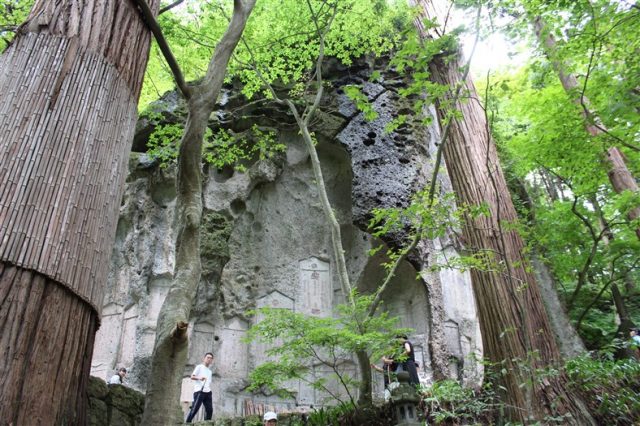
At the end of the stairs, you’ll find Niomon Gate. It was built in 19th Century and it’s actually one of the newest building in Yamadera complex.
Upper temples of Yamadera
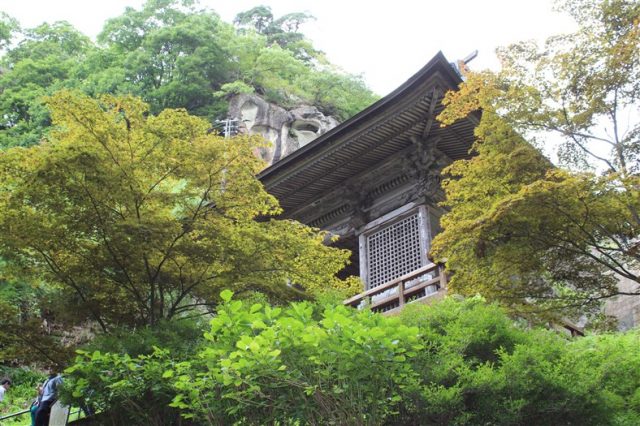
After Niomon Gate, the upper part of Yamadera is located. From here you can enjoy an open view on the valley, which is in constrast with the close view you had inside the wood.
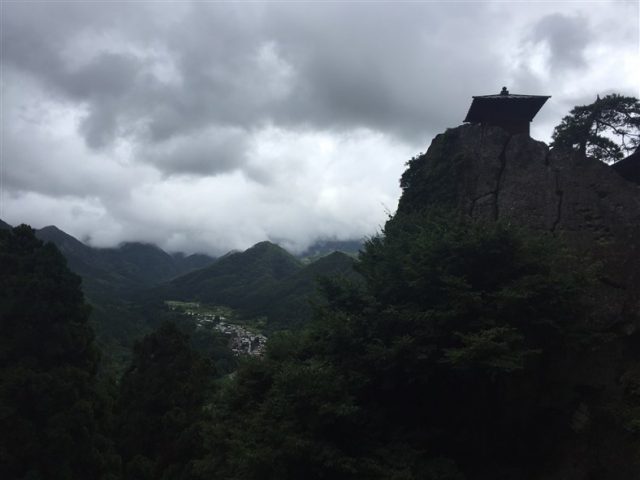
Two of the most famous buildings are Kasaido Hall and the next Nokyodo Hall. Both are placed on the left side of Niomon Gate, on the top of a rock. Kasaido Hall is dedicated to the founder of the temples, Jikaku Daishi (monk Ennin); Nokyodo Hall was used as a room where sutra were copied. Past Kasaido Hall, you’ll find a stairway that leads to Godaido Hall, a observatory deck, built in the early 1700. Here you’ll have the best view on the valley.
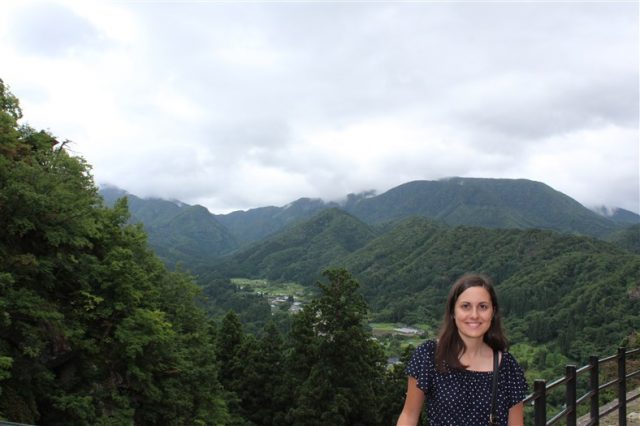
Going back to Niomon Gate, a small path goes to Okunoin area, where Daibutsuden is located. Inside, a Buddha Amida statue is place, and visitors can admire it just from outside the building.
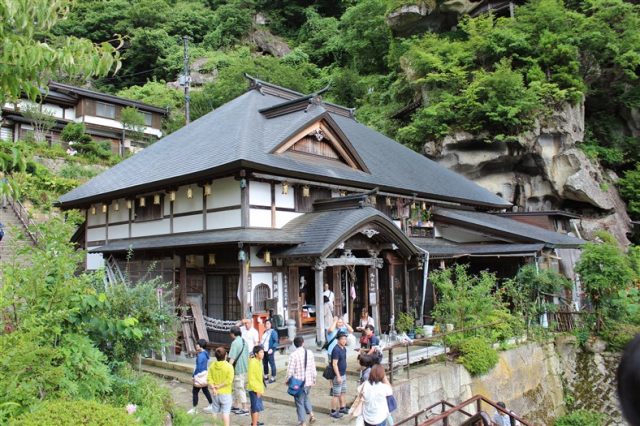
Fuga no Kuni
South of Yamadera and the train station, there is Fuga no Kuni, that is an entertaiment complex with some restaurants and souvenir shops.
Here there are also a museum dedicated to Matsuo Basho (400 yen -9.00-16.30), which tells about his trips in the North of Japan, and another museum of western art, displaying paintings, sculptures and pottery.
What to buy and what to eat
Souvenirs shops mostly sell religious staff (such as good luck charms, paryers, hand-painted candles, typical from this area) and traditional food and sweets.
Talking about food, Yamadera area is famous for Tama-kon: small Konjac balls, cooked into soy sauce and served on stick with mustard.
Also Hainuki rice is very famous and it’s even considered as one of the best in Japan.
Finally, Dashi Soba, typical from Yamagata prefecture, is very recommended. Soba are like spaghetti pasta made with buckwheat flour. They are cooked and served with Dashi (fish broth) soup and mountain vegetables. This plate is almost everywhere in Yamadera, but I recommend you a small restaurant on the left side of the bridge, right next to the river. The granny, who runs it, can’t speak anything but local dialect, but she’s very nice and kind. On the table there is a illustrated menu, in addition to the shouhin sanpuru (商品サンプル・plastic meals) shown outside the restaurant.
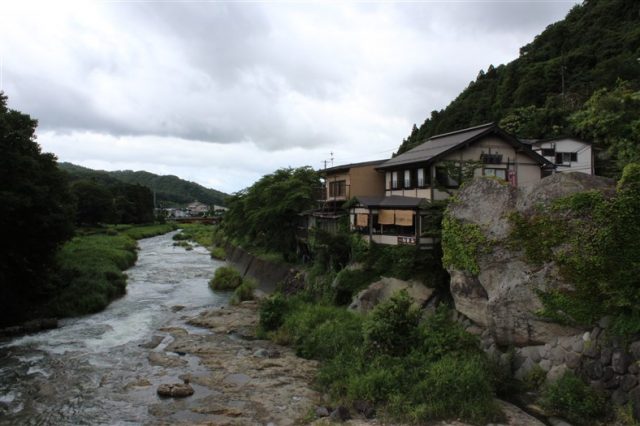
When shoud I visit Yamadera?
You can visit Yamadera all year round, but winter isn’t reccomend. Snow and ice can make the climb up to the top complicated and dangerous. Autumn, specially during the period of 紅葉 (Kouyou or Momiji), must be beautiful and colourful, thanks to the yellow and red leaves of the maples.
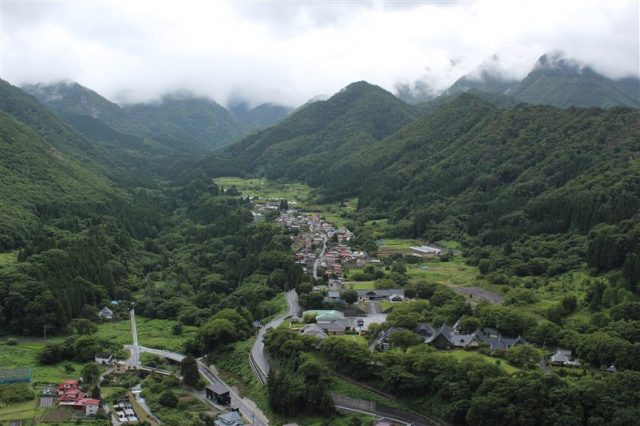
I really liked Yamadera. That traditional and natural Japan I like the most! Here, I couldn’t meet almost any Western tourist: information or translations in English or even latin script aren’t so common in Yamadera, indeed. Especially, inside the religious complex, information panels and signs are just written in Japanese, and no leaftlets in foreign languages were provided at the entrance.
Speaking and reading Japanese, I didn’t have any difficulty (even though a lot of people there speak only local dialect!), but if you don’t know Japanese language, be ready to use gesture or use Google translator! Anyway, don’t be afraid from this: Japanese people are always almost nice and they’ll try to make you feel at ease somohow!
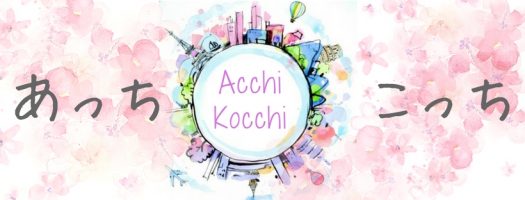
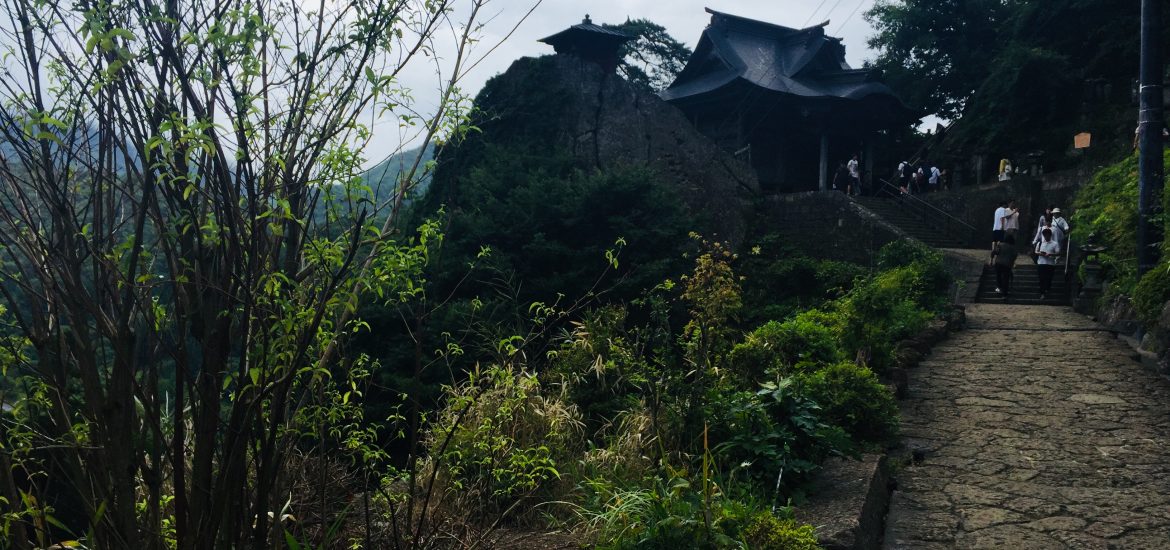
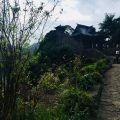
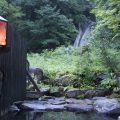
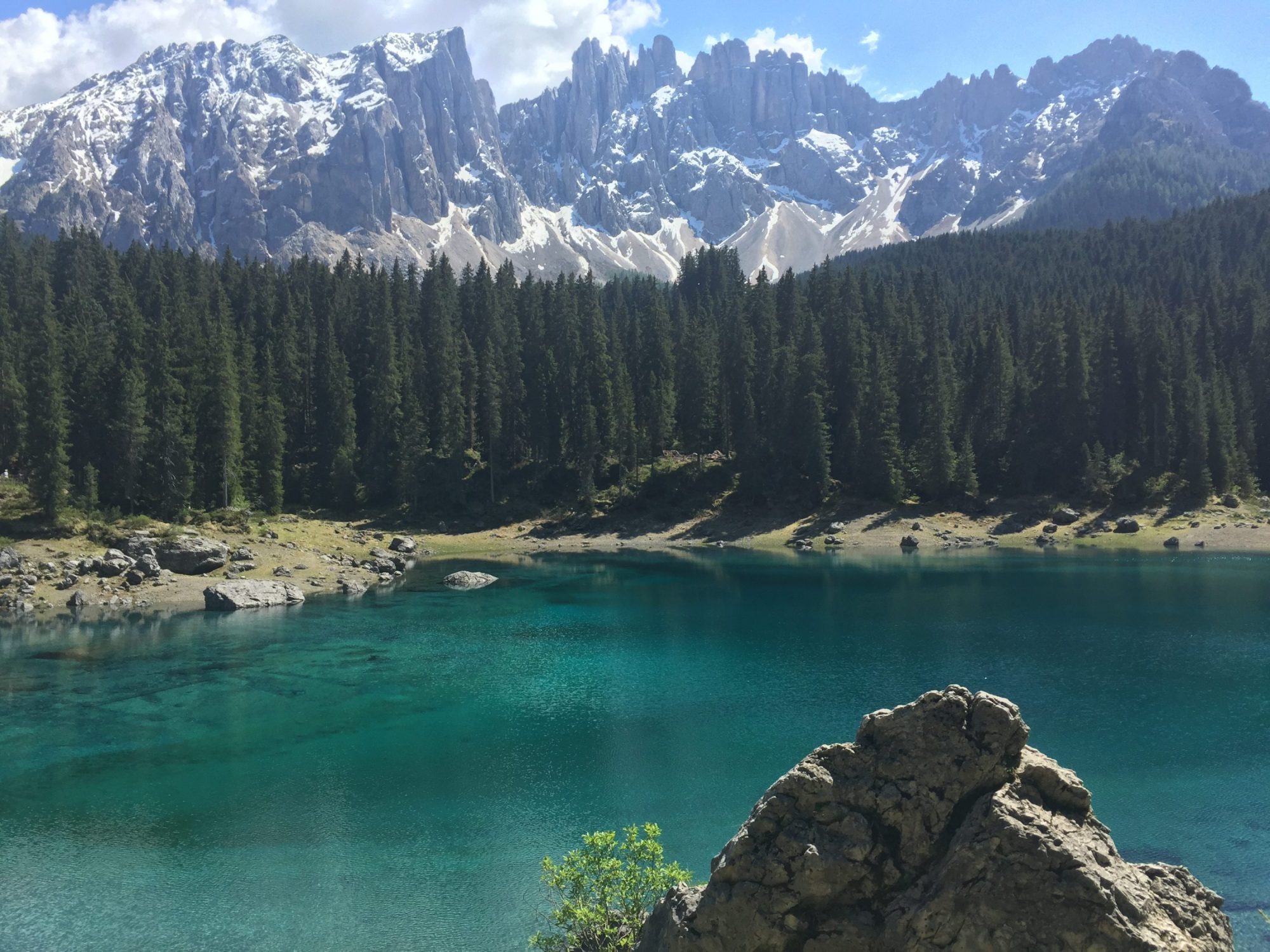
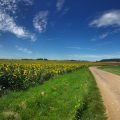
thanks for sharing, whats next trip? and why are you choice them?
Thank you for your comment!
Don’t know yet unfortunately! I choose them because I like to explore and see new places and to meet new cultures! 🙂